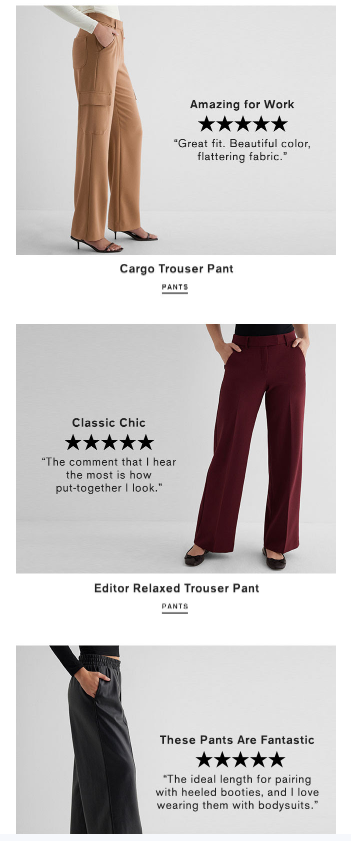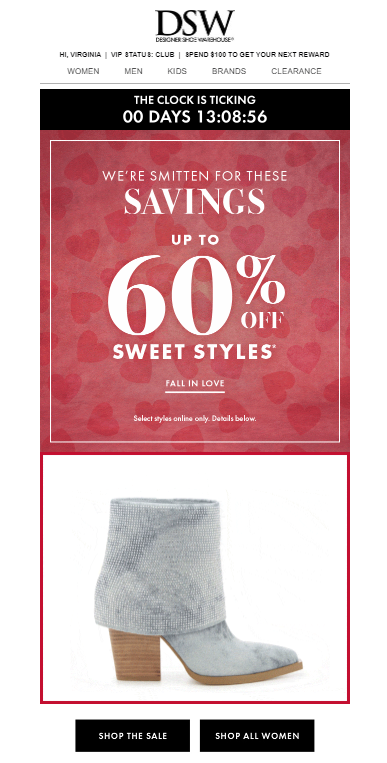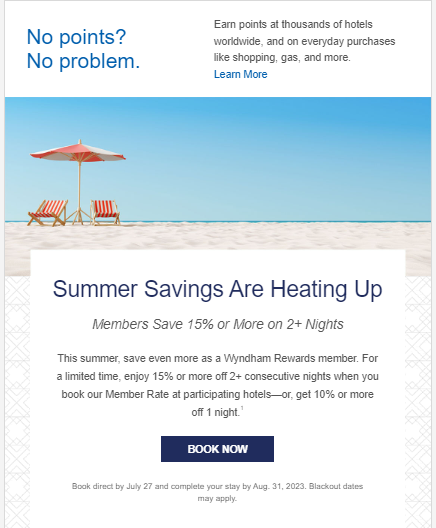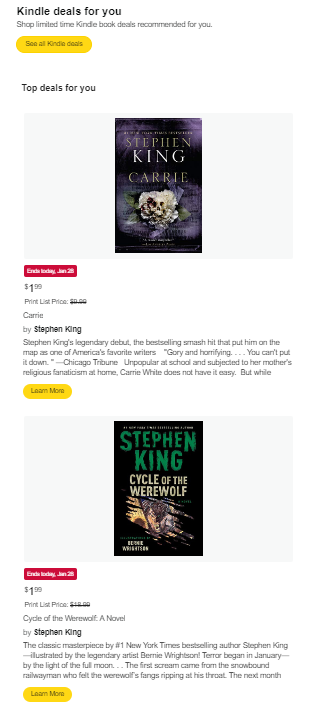Create your very own Auto Publish News/Blog Site and Earn Passive Income in Just 4 Easy Steps
Email funnels are integral to any email marketing strategy. An email funnel is a sequence of emails designed to nurture subscribers through all stages of the customer journey, including awareness, consideration, conversion, loyalty, and retention.
A well-crafted email marketing strategy builds strong customer relationships and is vital to your sales strategy. In this article, we’ll show you the parts of email funnels and identify a few techniques to take your brand’s email marketing campaign to the next level.
Understanding the email funnel structure
There are five different stages in comprehensive email funnels. Each stage coincides with where the consumer is in their familiarity with your company and their purchase decision. Here is what to know about each stage and a few email funnel examples to illustrate them in practice.
1. Awareness
The awareness stage is your subscriber’s initial introduction to your brand. They’ve just signed up for your email list, and they’re seeking more information about your products and services. They want to know how your offerings can provide value.
In this stage, emails are generally informative. They can include basic information about your brand, like your values or vision. You can share helpful content, including how-to guides, blog posts, or articles demonstrating credibility and authority. The focus of your email isn’t closing a deal or making a sale but introducing your customer to your company.
Take a look at this welcome email from Harris Teeter. It thanks the consumer for registering and introduces a few perks they can use with their new account.
This welcome email from Harris Teeter identifies a few features available with an account. Image source: Harris Teeter
2. Consideration
During the consideration stage of the customer journey, your subscriber debates whether to buy your product. They’re looking at all aspects of a purchase — price point, quality, and features. They may compare your offerings with similar products from a competitor.
You can use emails to walk your subscribers through the consideration stage and position your products as the optimal choice. You might include customer testimonials, case studies, unique product features, and competitor comparisons.
In this email from Express, the retailer highlights a few of its top-selling pants and selected customer reviews to encourage the recipient to browse its online shop.
 This email highlights a few selected products and includes client reviews. Image source: Express
This email highlights a few selected products and includes client reviews. Image source: Express
3. Conversion
A conversion email nudges a subscriber into taking a specific action, like booking an appointment or making a purchase. It may include incentives like discounts, free shipping, or gifts for extra motivation. Some conversion emails create a sense of urgency among subscribers with limited-time deals or countdown offers.
This conversion email from DSW highlights a sale of up to 60% off and includes a countdown timer to encourage the recipient to take advantage of the deal quickly.
 This DSW email showcases a limited sale with a countdown timer. Image source: DSW
This DSW email showcases a limited sale with a countdown timer. Image source: DSW
4. Loyalty
Once a customer buys from your brand, you can turn them into a repeat buyer with loyalty emails. A loyalty email offers recipients exclusive benefits, such as reward points or engaging content. It seeks to increase customer engagement and continuing interactions with your brand.
This loyalty email from Wyndham Rewards highlights special savings on future stays for its program members. It also includes a call-to-action for members to learn about offers, discounts, and loyalty points.
 This Wyndham Rewards loyalty email offers discounts to members who book a hotel stay. Image source: Wyndham Rewards
This Wyndham Rewards loyalty email offers discounts to members who book a hotel stay. Image source: Wyndham Rewards
5. Retention
Once subscribers move to the end of the customer journey, your goal is to retain them. You want to keep them interested in your brand’s offerings to maximize your lifetime customer value. By this time, you’ll have some insights into your customer’s buying behavior, demographics, and interests that you can use to personalize your messages.
Amazon is known for its personalized recommendations. In this retention email, Amazon promotes exclusive Kindle books based on the recipient’s prior purchases.
 This Amazon email uses personalization to recommend special deals on Kindle books. Image source: Amazon
This Amazon email uses personalization to recommend special deals on Kindle books. Image source: Amazon
Planning and building your email funnels
You can follow these seven steps to get your email marketing funnels off to a running start.
1. Identify your target audience
Your target audience comprises the consumers you consider most likely to buy your products and services. Identify the characteristics of your target audience, including their demographics, interests, needs, and pain points. This data can help you establish the outline of your funnel and the messaging to include.
2. Map out the customer journey within the funnel
Determine the steps and decisions your customers undergo before purchasing. Knowing the decision-making factors can help you pinpoint content that encourages your recipient to buy.
3. Create awareness and generate interest
Use other marketing channels to encourage clients to sign up for your email list. Website popups, in-store encouragement, and social media can help spread the word. Make sure customers understand what benefits they’ll receive from signing up.
Learn about our list-building tools
4. Capture leads and nurture prospects
As customers begin receiving your emails, they may interact with your website, explore your blog, or take other actions. Use dedicated landing pages to monitor what interests them and create follow-up emails to engage them further.
5. Convert leads into customers
Sometimes, subscribers need an extra push to make a purchase. Use discounts, promotions, and other incentives to turn qualified leads into buyers.
6. Retain customers and encourage brand advocacy
As your clientele grows, increase your marketing campaign’s return on investment (ROI) by building customer retention strategies. Consider offering a rewards program and ask repeat clients for testimonials you can share with your audience.
7. Re-engage inactive subscribers
You may notice engagement decrease among your subscribers over time. If that happens, try reattracting their interest through personalized emails, one-time promotions, or other incentives.
Tips for a high-converting automated email funnel
The ultimate goal of most marketing email campaigns is revenue generation. Here are a few tips to boost conversions.
Segment your email list
Categorizing your subscriber list by different characteristics — such as demographics, location, purchase history, interests, and other factors — helps you target specific customer needs. Use segmentation to align your marketing content with each customer group.
Optimize email sending frequency
Your customers probably won’t open every message you send, especially if your content is repetitive or you send emails too frequently. Try to maintain a respectful sending frequency that keeps your brand top of mind without being overly spammy.
Deliver high-quality content
When your emails consistently provide value, your subscribers will read them. Ensure your messages include informative content that speaks directly to the recipient’s interests.
Choose the right marketing automation software
Email marketing automation software sends your messages according to your preferences. You can schedule a sales funnel email sequence at different times and trigger messages when a subscriber takes a specific action, like adding items to their shopping cart.
Keep your email list clean
Email service providers track your send score, which represents how often subscribers open and interact with your emails. To maintain your sending reputation, honor all unsubscribe requests immediately and monitor bounced emails.
Read: How to Clean Your Email List (and Why You Need Regular Scrubbing)
Effective email marketing funnel strategies
Here are a few strategies to get results from your email marketing funnel.
- Craft compelling content: Readers want value from your emails; otherwise, they’ll ignore them. Get creative in your messaging to enhance campaign results.
- Personalize your messages: Find ways to personalize your content, such as making client-specific recommendations or including location-specific information.
- Implement trigger-based emails: You can automate some emails based on a customer’s actions. For instance, you could send an automated receipt whenever a client buys something on your website.
- Leverage social proof: People who are unaware of your brand want to know about other customers’ experiences. Include testimonials and positive customer reviews to build trust.
- Address objections: If you know of specific hurdles to a customer’s purchase, discuss them in a targeted message.
Email types and content for funnels
You can include all kinds of messages in your email funnels. Consider these ideas for inspiration.
Nurture emails: building relationships
A nurture email seeks to learn more about a subscriber and move them through your customer journey. Use this email type to ask for subscriber preferences, schedule an introductory call, or provide informative content.
Problem & solution emails: positioning your brand
Most people buy products or services to fix a problem they have. You can use a problem and solution email to discuss how your offerings can solve the subscriber’s issue.
The pitch: presenting your offer
In a pitch email, you showcase a product or service directly to your client. Including a discount or promotion can be the nudge they need to purchase.
The lift: increasing perceived value
Lift emails showcase your brand’s appeal. Use them to distinguish your organization from direct competitors.
Social proof emails: leveraging testimonials and reviews
A social proof email uses customer reviews and testimonials to demonstrate credibility and develop trust with new subscribers.
The objection killer: overcoming hesitation
Customers undergo a decision-making process before making a purchase. You can help them overcome any concerns by addressing them in an email.
The close: building urgency and offering a call-to-action
A close email uses urgency to encourage immediate action. Flash sales, limited products, and one-time discounts fall into this category.
The last call: acknowledging scarcity and providing final reminders
A last-call email attracts any stragglers who haven’t yet converted. Use them to remind customers of sale end dates and product closeouts.
Email funnel optimization practices
You can use various tools to monitor your campaign’s performance and improve results.
Measuring funnel performance and KPIs
Email analytics help you review subscriber engagement and track your campaign’s ROI. Most email marketing software (including Constant Contact) include tools to record open rates, click-throughs, and conversions. Use your reporting dashboard to help you benchmark campaign performance and compare results.
Testing and refining email elements
If you include any interactive elements within your email, such as surveys, links, or videos, test their performance before sending your message. You want to ensure everything works properly before emailing your subscribers.
Integrating CRM with email funnels for enhanced results
Customer relationship management (CRM) software lets you integrate all your customer interactions across various channels in one place. You can use it to manage your subscriber list, pinpoint leads, and cross-reference client activity, making it easier to optimize emails to fit your client’s needs.
Tracking user behavior and conversions within emails
Sending a text-based email with no links or other interactive elements limits your ability to monitor your campaign’s performance. Instead, create dedicated landing pages specifically for your emails. That way, you can see how many people browse your offerings and take action.
Selecting tools for building and managing email funnels
Finding the best email marketing software is crucial. After all, you need the proper support and features to deliver results. Constant Contact has you covered. Our email marketing software includes customizable email templates, list management services, useful integrations, and a full analytics suite.
Common challenges and solutions in email funnel marketing
As you begin your marketing efforts, you may encounter a few obstacles. Here are some typical challenges and how you can overcome them.
Dealing with email funnel drop-offs
Ideally, every subscriber would open your emails, read your content, and take action. However, sometimes subscribers lose interest and stop interacting with your messages. Consider implementing a winback campaign to reengage customers before they unsubscribe. Offering a special incentive might be enough to recapture their attention.
Overcoming technical issues with email deliverability
If you notice deliverability issues — like emails going to spam or bouncing back — address them quickly. Review your subscriber list and remove any addresses with hard bounces that indicate the address isn’t active. The better your list quality, the less chance you’ll end up in readers’ spam boxes.
Rescuing disengaged subscribers
It can be frustrating when hard-won subscribers stop opening your emails or engaging with your content. To reengage them, set up a win-back email campaign to regain their interest. You might include a one-time deal or special offer to enhance results.
Understanding privacy and compliance considerations for email funnels
Most countries have privacy and other compliance regulations. Understanding and following the laws that apply to your organization is critical. An experienced attorney can identify applicable regulations and advise how to adhere to them.
Maximize your conversions with an email sales funnel
As you plan your email marketing funnel, consider the five stages most consumers go through in the customer journey and how they apply to your organization. This can help you develop an effective strategy that meets your brand’s unique needs.
To learn more about email marketing, check out a few of Constant Contact’s blogs:
Create your very own Auto Publish News/Blog Site and Earn Passive Income in Just 4 Easy Steps







